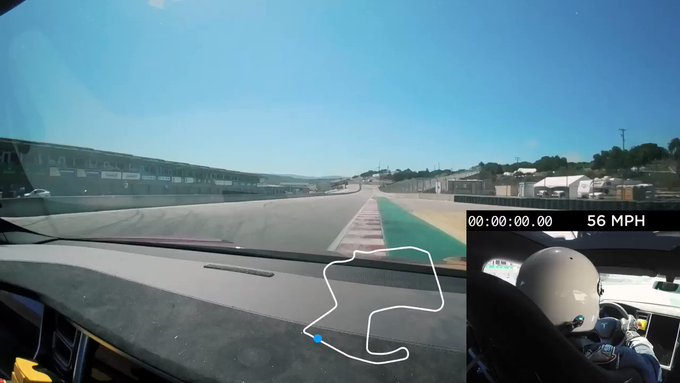As reported by Space.com: Elon Musk has a Starship, and one day he expects it will help SpaceX reach other worlds.
Standing beneath a towering Starship Mk1, a prototype for SpaceX's massive reusable launch system, Musk laid out his plan for interplanetary travel at the company's South Texas test site here on Saturday (Sept. 28) — the 11th anniversary of the first successful orbital launch of SpaceX's first rocket, the Falcon 1.
The new version of Starship (and its Super Heavy booster) will be able to carry up to 100 people to the moon, Mars or other destinations in space or around Earth, he said. It will stand 387 feet (118 meters) tall and be completely reusable, with quick turnarounds.
This is the rocket that will launch the billionaire Japanese entrepreneur Yusaku Maezawa and a handful of artists on a trip around the moon in the 2020s. SpaceX unveiled that planned space tourist trip last year (but did not disclose how much Maezawa paid).
"This is, I think, the most inspiring thing I have ever seen," Musk told a crowd of about 200 SpaceX employees, guests and reporters at the company's site near Boca Chica Village, just outside of Brownsville. "Wow, what an incredible job by such a great team to build this incredible vehicle. I'm so proud to work with such a great team."
Musk later thanked Maezawa for his support. The billionaire has contributed an unspecified amount to SpaceX to aid Starship's development.
Musk has long said that the main goal of SpaceX, since its founding in 2002, has been to help make humanity a multiplanet species. The company has developed reusable Falcon 9 and Falcon Heavy rockets, as well as reusable Dragon cargo capsules and a new Crew Dragon ship for astronauts. It has launchpads in Florida, California and now Boca Chica, where the company broke ground on its test site in 2014.
But Mars, Musk has said, has remained the true objective.
"This is the fastest path to a self-sustaining city on Mars," he said Saturday night, referring to the Starship-Super Heavy architecture.
A Starship evolution
SpaceX's Starship concept has undergone a kind of rocket evolution in the three years since Musk first unveiled it to the world in September 2016 at the International Astronautical Union meeting in Mexico.
At that meeting, Musk unveiled what he called the the Interplanetary Transport System, or ITS, for Mars colonization. The ITS called for a fully reusable spacecraft (with two fins) and booster that would stand 400 feet (122 m) high when assembled. Its first stage would have 42 next-generation Raptor engines, and the booster would be 40 feet (12 m) wide. The spacecraft would have nine Raptors. (SpaceX's Falcon 9 rockets have nine Merlin engines on their first stage. Falcon Heavy first stages have 27 Merlins.)
Musk updated the design in 2017, calling it the Big Falcon Rocket, or BFR for short. That plan called for a launch system that would stand 348 feet (106 meters) tall and 30 feet (9 m) wide. Its booster would have 31 Raptor engines, while the spacecraft atop it would have six.
Then, in 2018, Musk unveiled yet another design (and the Starship name): a sleek, stainless-steel spacecraft with three tail fins that would stand taller than its 2017 precursor, with a height of 387 feet (118 m). The spacecraft would still be powered by six Raptor engines, with up to 37 Raptors powering the booster (now called Super Heavy).
The switch to 301 stainless steel from a lightweight, but expensive, carbon fiber composite material, was a turning point, Musk said. The steel gets stronger the colder it gets, making it perfect for flights in the cold depths of space. It also has a higher melting point, making it more resilient during the fiery reentry through Earth's atmosphere.
It's also way cheaper, about 2% the cost of carbon fiber, he added.
"Steel was the best design decision on this whole thing," Musk said.
This latest design has held to the present day; SpaceX is still shooting for a 387-foot-tall Starship-Super Heavy stack, with six Raptors on the spacecraft. The number of engines on Super Heavy could vary from flight to flight; Musk said the rocket has space for up to 37 Raptors, and each mission will probably require at least 24.
"Starship will allow us to inhabit other worlds," Musk wrote on Twitter Friday (Sept. 27). "To make life as we know it interplanetary."
With the design nailed down, SpaceX plans to move fast.
"This is going to sound totally nuts but I think we want to try to reach orbit in less than six months," Musk said. "Provided the rate of design improvement and manufacturing improvement continues to be exponential, I think that is accurate to within a few months."
.And people could start flying aboard the vehicle in the next year or so if the test program continues to go well, he added. That appears to be an extremely accelerated program, given that SpaceX has not yet launched astronauts on its Crew Dragon spacecraft for NASA.










